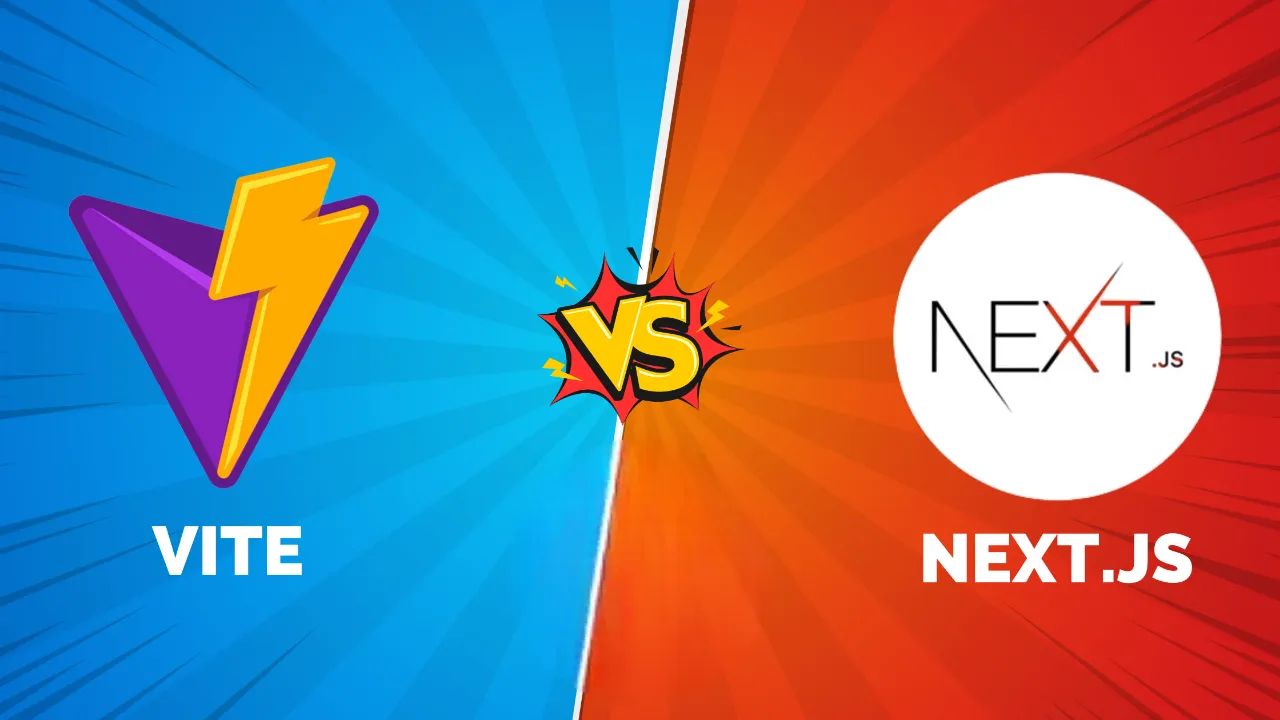
Choosing the right frontend tooling can be a game-changer. As the JavaScript ecosystem continues to evolve rapidly, two names have emerged as key players: Vite and Next.js. Whether you’re building a blazing-fast SPA or a production-ready, SEO-optimized platform, the decision you make will affect performance, maintainability, and even team velocity.
In this post, we’ll do a quick comparison of their strengths, weaknesses, and real-world use cases.
🚀 What is Vite?
Vite is a frontend build tool that significantly improves the development experience. Created by Evan You (the creator of Vue.js), it uses native ES modules and esbuild under the hood, offering:
- Instant server startup
- Lightning-fast hot module replacement (HMR)
- Minimal configuration
- Support for multiple frameworks (React, Vue, Svelte, etc.)
Ideal for: SPAs, prototypes, and projects where dev speed is critical.
⚙️ What is Next.js?
Next.js, built by Vercel, is a full-stack React framework. It provides all the features needed to build production-grade applications:
- Server-side rendering (SSR)
- Static site generation (SSG)
- Incremental Static Regeneration (ISR)
- API routes
- Image optimization
- Built-in routing and middleware
Ideal for: Content-rich platforms, e-commerce, blogs, and full-stack apps requiring SEO and backend logic.
🆚 Side-by-Side Comparison
| Feature | Vite | Next.js |
|---|---|---|
| Development Speed | Ultra-fast startup and HMR | Fast, but slower due to SSR/SSG complexity |
| Build Tooling | Uses esbuild and Rollup | Uses Webpack (or SWC in newer versions) |
| Framework Support | Vue, React, Preact, Svelte, and more | React only |
| SSR Support | Requires manual setup or integrations | Built-in |
| Routing | Not built-in (use React Router, etc.) | File-based routing built-in |
| SEO Optimization | Client-side rendered; needs manual work | Native SEO support with SSR/SSG |
| Flexibility | Unopinionated | Opinionated but complete |
| Plugin Ecosystem | Rollup-compatible, growing fast | Vast, with Vercel ecosystem support |
🎯 When to Choose What
Choose Vite if:
- You need fast iteration cycles.
- You’re building an SPA or internal tool.
- Your app doesn’t require SEO out of the box.
- You want framework flexibility.
Choose Next.js if:
- You’re building a production-grade, SEO-critical app.
- You want out-of-the-box SSR, SSG, and routing.
- Your project involves content management (like with Prismic or Hygraph).
- You’re building a full-stack solution with frontend and backend handled together.
🔍 Developer Experience
”Vite feels like using the future. Every save reflects instantly.”
— Frontend Engineer on Reddit
”Next.js is a full-blown engine with built-in optimization. It handles everything from routing to backend.”
— Dev Team Lead in an e-commerce company
🏗️ Real-World Use Cases
Vite
- Makimo reduced build time from 28s to 16s and dev startup from 4.5s to 0.39s.
- Used heavily in projects where development speed is more important than production complexity.
Next.js
- Vercel’s own dashboard runs on Next.js.
- Twitch, Hulu, and TikTok Web rely on Next.js for SEO and performance.
🧩 Can You Combine the Two?
Yes, in some hybrid architectures:
- Use Vite for internal tools or admin dashboards.
- Use Next.js for the public-facing SEO-focused frontend.
Or you can even start with Vite for MVPs and migrate to Next.js as requirements grow.
📌 Final Thoughts
Both Vite and Next.js are powerful tools, but they serve different goals:
- Use Vite when development speed and flexibility are your priorities.
- Choose Next.js when SEO, scalability, and built-in features matter.
The best choice depends on your project goals. Don’t just follow trends, match tools to your actual needs.